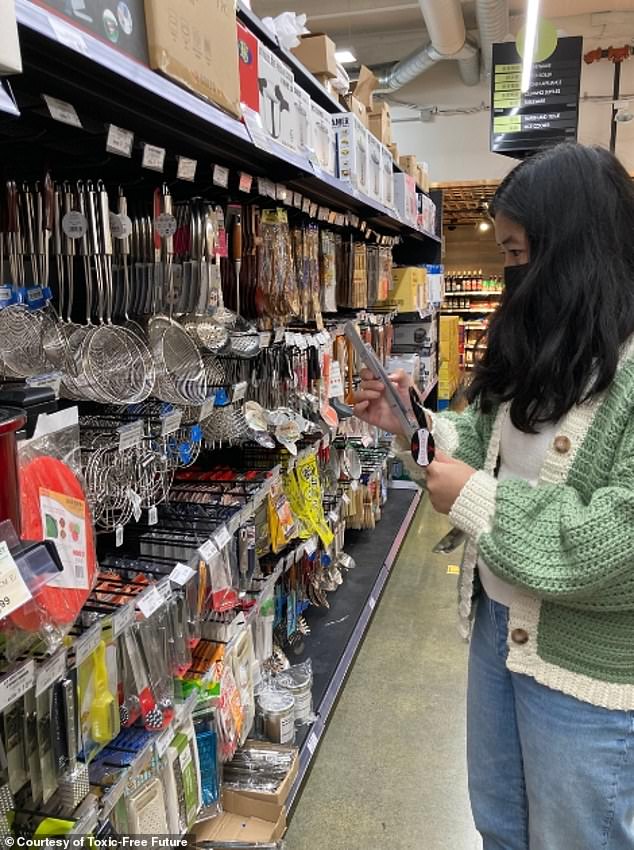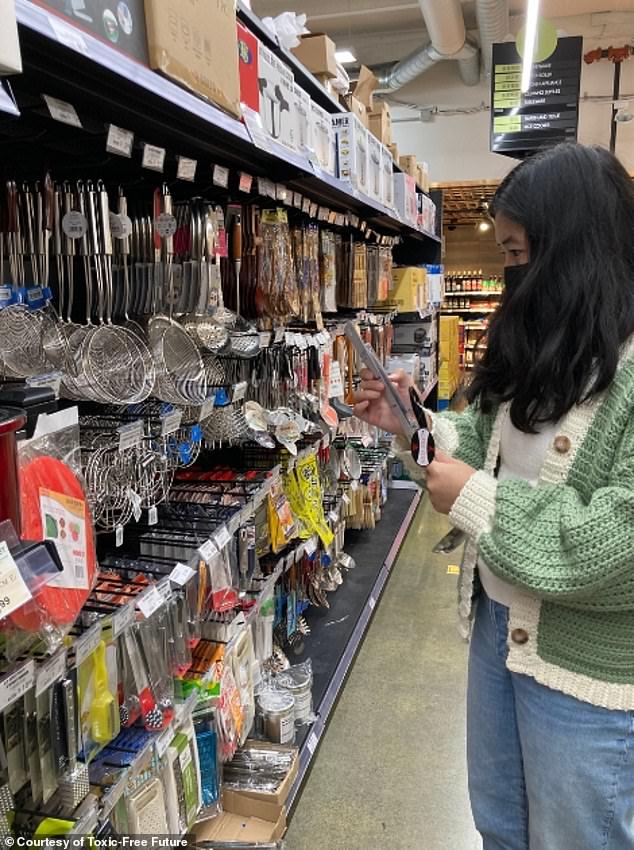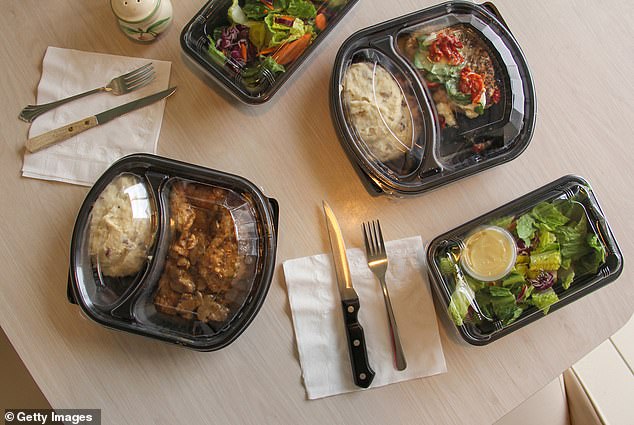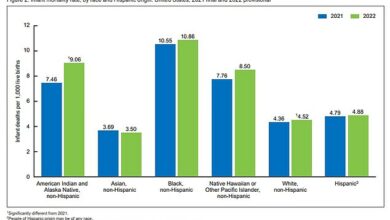How the color of your kitchen utensils can increase the risk of cancer and other health problems




Customers should be careful when purchasing black kitchenware; this could increase the risk of cancer.
Research has found that 85 percent of spatulas, to-go cups and other kitchen utensils made from recycled black plastic contain refractory substances linked to fertility problems, developmental delays and tumors.
These chemicals end up in kitchenware, take-out containers and toys when manufacturers recycle fire-safe electronics such as televisions or electrical enclosures.
Study author Megan Liu, science and policy manager at the Toxic-Free Future campaign group, said: ‘These cancer-causing chemicals should not be used in the first place, but recycling puts them into our environment and into our homes in more ways than one. The high levels we found are concerning.”

Ms. Liu, shops for recycled plastic kitchenware at an American retailer. The investigation did not reveal which brands were tested and where they were purchased

Black plastic utensils, take-out containers and toys found to contain levels of flame retardants, which researchers say increases the risk of cancer
Since the 1970s, flame retardants have been added to consumer products such as sofa cushions, telephones and building materials.
They do not break down easily in the environment.
They are so common that people have found these chemicals in blood, breast milk, and other substances urine of many Americans.
In the decades since, research among people regularly exposed to these chemicals, such as factory workers and firefighters, has increasingly linked them to health problems, according to the National Institute of Environmental Health Sciences.
Researchers from Toxic Free Future and Vrije Universiteit Amsterdam decided to see if these chemicals were found in products that millions of Americans use every day.
They purchased black plastic items from U.S. retailers.
They did not reveal which stores they purchased the products from and which brands the products themselves were.
Some of the twenty products analyzed included sushi trays, spatulas and bead necklaces. They did not test other colors of plastic items.
After taking them back to the lab, they discovered that 85 percent of the products contained flame retardants or their byproducts.
The study suggests the problem has to do with the products manufacturers decide to recycle.
This kitchenware is of particular concern because people can absorb the flame-retardant chemicals by eating it, the authors suggest.
Flame retardants and their byproducts are especially harmful to children because their organs are still developing and they are more likely to be exposed to them in large quantities by putting plastic objects in their mouths. according to the NIH.
‘The health of women and children must be prioritized over the profits of the chemical industry. We need less toxic plastic, safer chemicals and materials, and an end to the secrecy of plastic ingredients,” Ms Liu said.
Still, exposure to these chemicals is unlikely to be harmful to health. Instead, repeated, high levels of exposure are likely to cause people to develop the associated problems.
Research is being conducted into how these damage the body. They are likely to accumulate in the body over time, the researchers said.

Takeaway containers made from recycled plastic were also found to contain flame retardant byproducts. When heated and eaten, these chemicals can enter the human body and build up over time
Once in the body, these chemicals act as endocrine disruptors and disrupt the body’s hormonal system. This harms reproductive health, fertility and development and can lead to mutations that can cause cancer.
However they work, a growing number of studies continue to show that the chemicals are linked to a number of health problems.
A survey from April 2024 Research of more than 1,000 Americans over 20 years found that people with high levels of flame retardants in their blood had a 300 percent higher risk of dying from cancer than people with low levels of flame retardants in their blood.
Thyroid and breast cancer, known to be linked to endocrine-disrupting chemicals, were particularly common.
This is also the case with research Harvard School of Public Health found that 80 percent of women who underwent IVF treatment to become pregnant had levels of flame retardants in their urine.
Those with the highest levels of the chemicals in their bodies had a harder time getting pregnant, staying pregnant and giving birth to a live child than people with lower levels of the chemicals in their bodies.
With this evidence in mind, and knowing how harmful these chemicals are to children in particular, Mike Schade said: A toxic-free future director of Mind the Store said companies making recycled plastic kitchenware need to do better.
Mr Schade said: ‘Major retailers must ensure the products they sell, from children’s toys to kitchen spatulas, do not introduce banned carcinogenic chemicals into our homes.’




